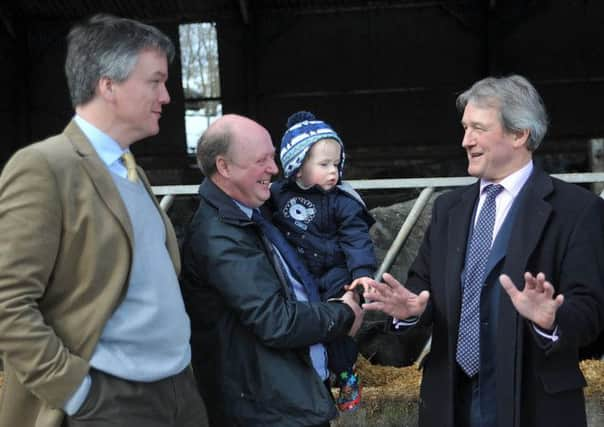NFU centenary tale, told by its many characters


It was a rare, unguarded comment that confirmed to my satisfaction much of what I’d worked out for myself about the farmers’ union in a few years in journalism. Namely, that the automatic NFU response to any local, national or international development was to be against it, and its response to any government decision affecting farmers, no matter how beneficial, would be at best grudging.
What also irked me in those early years was that if Scottish football reporters were sometimes described as “fans with typewriters” that was because they wanted to be; but agricultural journalists were expected, at least by the NFU of the time, to take the same uncritical approach. The NFU would be right even when wrong.
Advertisement
Hide AdAdvertisement
Hide AdLooking back almost half a century, it is easier to see why that was. We were barely 20 years on from the Second World War and many of those at the top in farming and journalism shared experiences and respect. Such as Bob Urquhart at The Scotsman, and Harry Munro, long-serving secretary (equivalent of today’s chief executive) at the NFU, both former RAF wing commanders.
Many in farming still had clear memories of the First World War, never mind the second, when they believed that the importance of home food production to the nation had been recognised.
Their dream was of permanent recognition when money being squandered on “booze, baccy and bingo” – I quote from NFU council of the 1960s – would again be spent on food.
The NFU was the driving force for that recognition in what seemed liked a permanent war of words with the UK government when build-up to the annual January price review, setting prices and support mechanisms for farm products, occupied most of the space on farming pages not devoted to shows and sales.
Criticism of NFU or farmers was unwelcome. But my view was, and still is, that the union has every right to argue a case for its members and commentators have every right to say when we think the union is mistaken, grudging or crying wolf again. It’s called trying to strike a balance.
Andrew Arbuckle’s achievement in his book, The First 100 Years: A History of NFU Scotland, is to describe NFU thinking and action in a clear, concise and entertaining style that gives me pause for thought.
Not exactly recantation, but recognition of the often selfless work put in over a century by the mainly unsung.
Dedicated research over several years by Andrew and his brother John – rating on the Richter scale of brotherly love can’t come much higher than studying NFU minute books for nuggets – still confirms some of my thinking. It’s human, and farming, nature to concentrate on what affects us directly and to demand that the government do something.
Advertisement
Hide AdAdvertisement
Hide AdThat is reflected frequently in an NFU story that began when farmers got together in 1913 to protest about the price of milk. In a century, the milk marketing boards have come and gone, price review setting a price for a pint has been and gone, and protests about the on-farm price continue.
As it does on many other fronts, although the union has always been dominated by livestock concerns and it’s a reasonable bet that the majority of today’s 8,600 members – there are about 15,700 recipients of European Union annual single farm payment in Scotland – are beef and sheep farmers.
In the past 40 years, EU decisions and the whys and wherefores of the common agricultural policy (CAP) have dominated NFU work.
Not surprising when the average annual single farm payment to a Scottish farm is more than £25,000.
Retaining these payments and defending them is hard work as the never-ending debate about the CAP continues. That work is well described in the book.
As are the union’s solid achievements on behalf of members: establishment of the marketing boards, campaigns against animal diseases, work during weather crises, forcing political recognition that Scotland’s hill and upland areas must be protected under the CAP, setting up a Brussels office, promotion of Scottish food and presenting a united front for the farming industry.
As are the personalities who have brought the union through its first 100 years, including the long-term presidents since annual presidencies were scrapped in 1977 – Mike Burnett, John Cameron, Ian Grant, John Ross, Sandy Mole, George Lyon, Jim Walker, John Kinnaird, Jim McLaren and now Nigel Miller.
There have been only ten secretaries/chief executives, starting with AW Hunter, Miss A MacLaren (incidentally, the only woman to figure on any NFU headquarters list) and W Graham, then, a sobering personal thought, the seven I’ve known and usually respected if often disagreed with: Harry Munro, Scott Johnston, Tom Brady, Ed Rainy Brown, Andy Robertson, James Withers, Scott Walker.
All could have told an interesting tale of their time.
Advertisement
Hide AdAdvertisement
Hide AdAndrew Arbuckle has made an excellent job of telling their story, and that of the union, for them.
• The First 100 Years: the story of NFU Scotland, by Andrew Arbuckle, published 10 February by NFU Scotland, price £10.